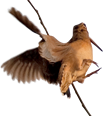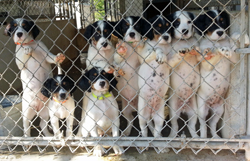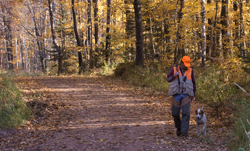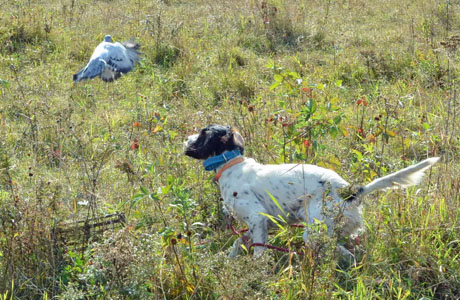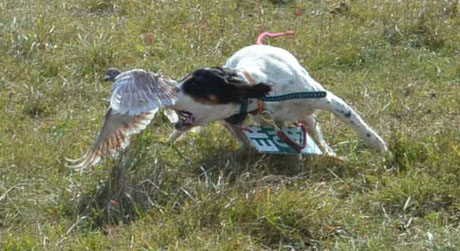Bird and gun introduction
Starting a bird dog puppy isn’t much different than other kinds of dogs. Adequate socialization to people and other dogs along with good nutrition, abundant exercise and consistent expectations will go a long way to ensuring future success. But there are two additional lessons that can make or break a bird dog’s future.
These are the introduction to birds and gunfire.
Birds first!
In the puppy training programs we offer, we call this step “bird and gun introduction” and that’s not by chance. It should be approached in that order.
The most natural way to start is also the most exciting to a bird dog—birds. Love of birds should be in their genes.
The first step is to make sure the dog knows it has power over the bird. (We use carded pigeons and quail in our training. Both are good options.) Allow the dog to chase and catch a bird. We pull off some wing feathers so the bird can fly a short distance. Ideally, the dog will chase the bird, pick it up in its mouth and bring it back. Even if the dog doesn’t do all three steps, the most important part is to mouth the bird, proving it is bold and confident towards the bird.
Some dogs catch on immediately; some need three to four opportunities and a few will need more. If a dog isn’t showing great desire to get the bird, wait a few days and then try again. But once the dog has shown that it is bold, stop. We don’t want the dog to catch another bird that hasn’t been shot.
Gunfire.
While the desire for birds is genetic, getting excited at the sound of gunfire is not. On the other hand, a dog isn’t born gun shy. Negative association through improper exposure to gunfire or other loud noises can be difficult—if not impossible—to overcome.
The best way to introduce gun fire is when the dog is distracted by something else exciting. Again, we use birds.
Use a small-bore shotgun or training pistol and wait until the dog is focused on chasing a bird. When it’s in full-chase mode at least 30 yards, fire the gun in the opposite direction. If the bird introduction was done correctly, the dog shouldn’t even notice. If the dog shows any reaction to the sound, just ignore it.
One shot is enough for the first session. During the next several sessions, slowly start shooting sooner until you’re shooting as soon as the bird is flushed. Finally, wait until the dog is hunting and fire a shot into the air. If the dog looks for a flying bird, then it has made the correct association.
Finally…
Don’t take your puppy to the gun range to see if it’s gun shy. (It might be after that!) Don’t be in a hurry to get the lessons over. Let the dog set the time table. Don’t try to take shortcuts.
Proper introduction to birds and gunfire—in that order—isn’t something to take for granted. Most dogs will take to them easily and with confidence. But take your time and do it correctly. You’ll set the foundation for many years of good hunts.
Enjoy the process!
Photos above: Tana (Northwoods Blue Ox x Northwoods Chablis, 2012) enthusiastically chases a pigeon, catches and retrieves it. Photos by Brad Gudenkauf, owner of Tana.

